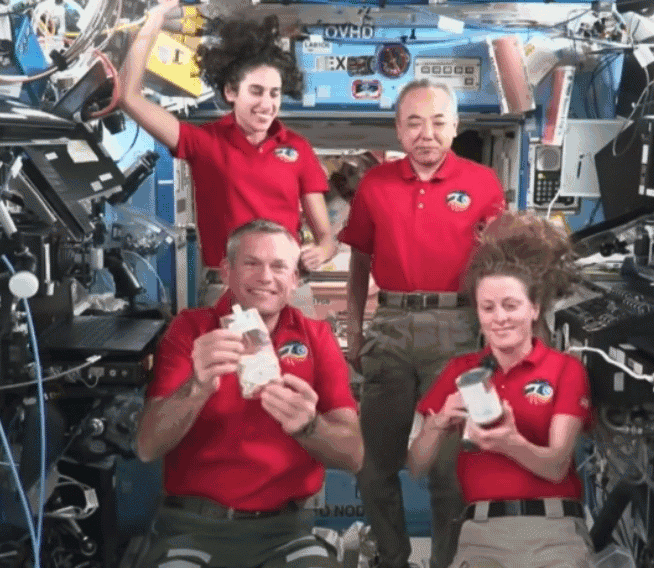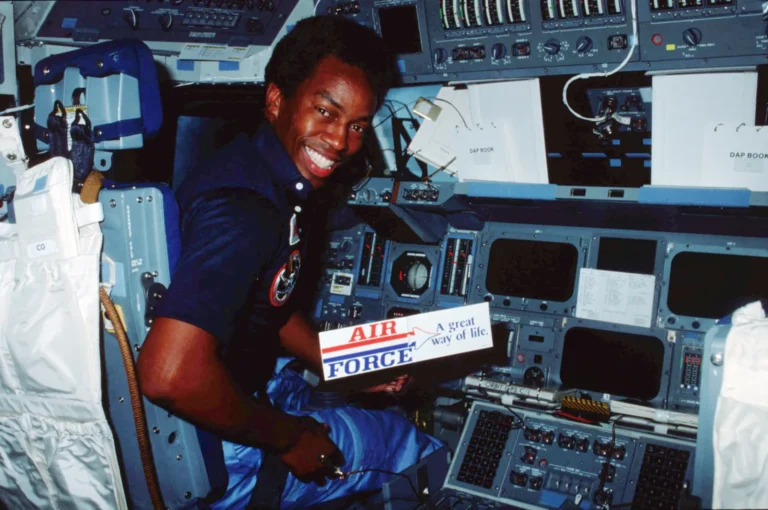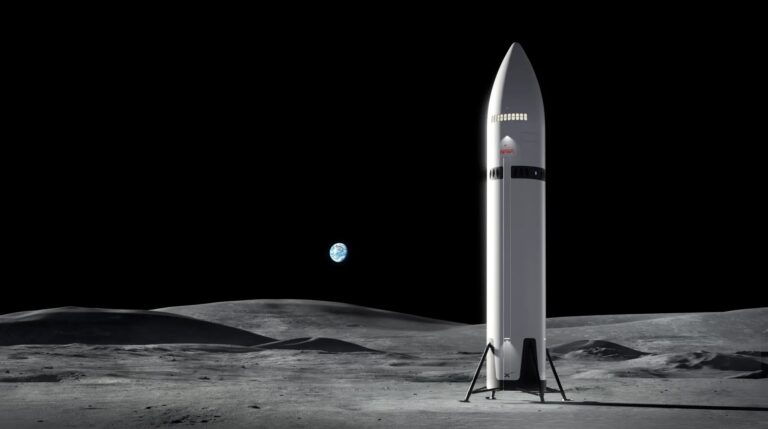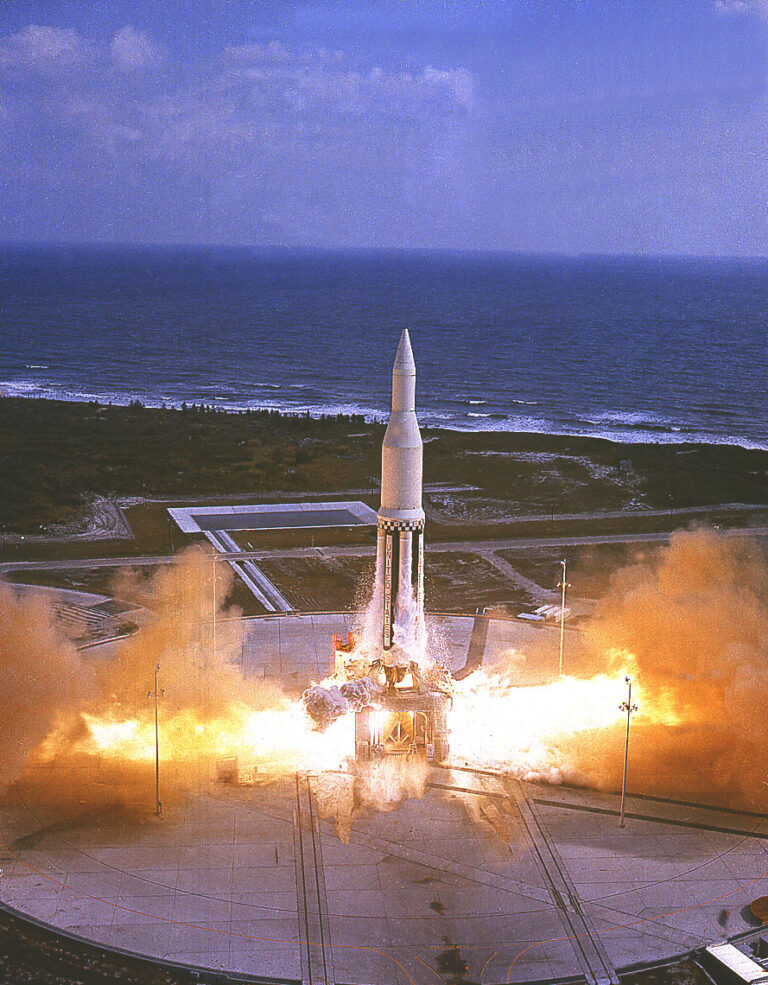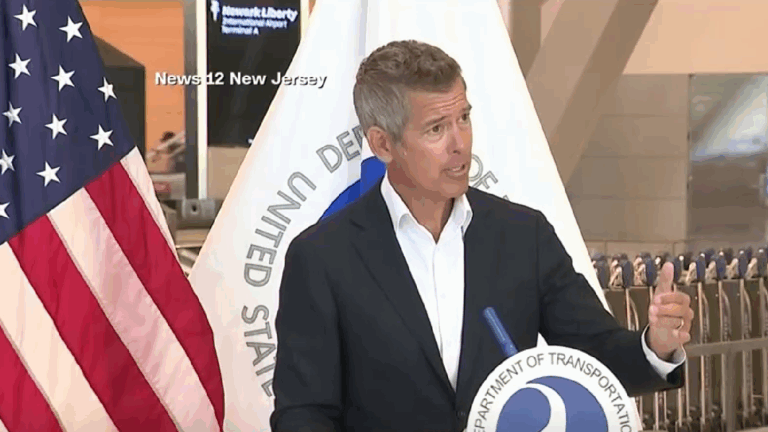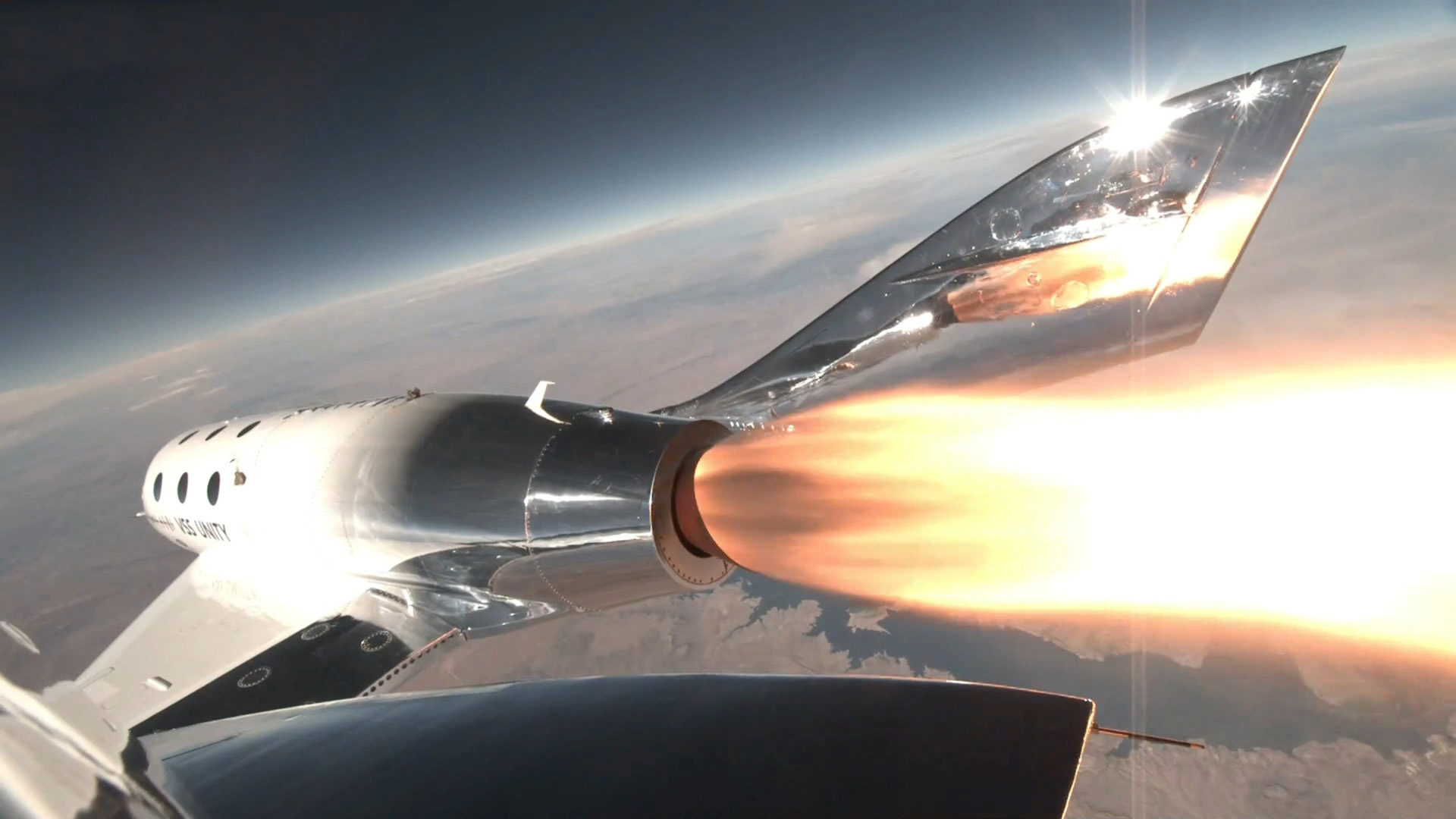
Key Takeaways:
- A Southwest Research Institute (SwRI) scientist completed a Virgin Galactic suborbital flight (Galactic 5) in late 2023, serving as a training and risk-reduction mission for a forthcoming NASA-funded astronomical experiment.
- The primary goal of the subsequent NASA mission is to assess the suitability of Virgin Galactic's SpaceShipTwo for astronomical observations by comparing data from a previously utilized imaging system on the Space Shuttle.
- The preparatory Galactic 5 mission successfully accomplished nine objectives, including rehearsing microgravity operations and validating the procedural timeline for the high-stakes NASA flight.
- The article emphasizes the emergence of crewed commercial suborbital vehicles as a cost-effective and operationally advantageous platform for scientific research, enabling direct researcher involvement in data acquisition.
In late 2023, I flew in space. But I didn’t fly as a NASA astronaut or a space tourist. Instead, I flew on a training and research mission aboard a Virgin Galactic spaceplane for my company, the more-than-3,000-person research and development nonprofit Southwest Research Institute (SwRI). The mission, named Galactic 5, was barely an hour long, but it was jam-packed with activities for nine separate mission objectives — all of which were successfully accomplished.
We took off and landed from Spaceport America in southern New Mexico, where Virgin Galactic is based. Aboard the flight with me as passenger crew were space tourist Ketty Maisonrouge and space researcher Kellie Gerardi, who was funded by the International Institute for Astronautical Sciences in Boulder, Colorado. For the three of us, it was our rookie spaceflight. The mission’s Virgin Galactic flight crew, consisting of commander Mike Masucci, pilot Kelly Latimer, and instructor Colin Bennett, were all multiple-spaceflight veterans.
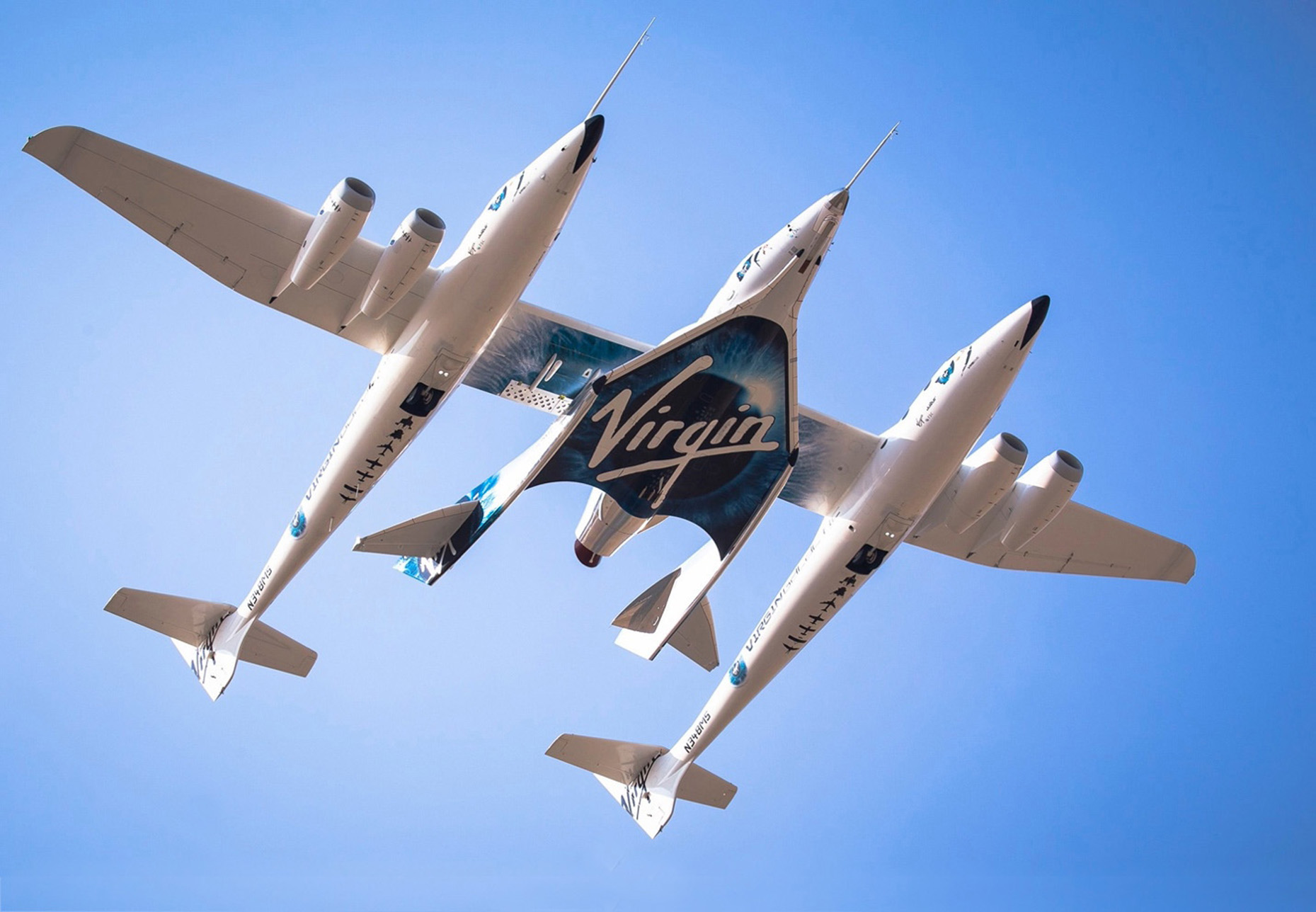
The spaceflight came about by proposing to NASA to test whether the Virgin Galactic spacecraft — known as SpaceShipTwo — would be suitable for performing astronomical observations that had previously been done on the space shuttle and suborbital sounding rockets. Specifically, we aim to find out if observations aboard SpaceShipTwo are significantly compromised by effects like exhaust films, spacecraft glints, and window micro-abrasions.
With NASA funding, I am going to test that — perhaps as early as 2026 — by taking into space a SwRI astronomical imaging system for which I was the principal investigator. This camera previously flew on two space shuttle missions and took images of stars, comets, planets, and the Moon through the shuttle’s windows. I will look at the same or similar star fields, but through SpaceShipTwo’s windows, then compare the data from both platforms.
But there are unique risks involved in having a first-time astronaut perform such an experiment on a brief, time-compressed suborbital flight: the possibility of being distracted in zero gravity high above Earth, the pressure of working quickly on a brief suborbital mission, and the challenge of learning to operate an astronomical camera system in one hand while maneuvering between windows in zero gravity with the other hand.
To reduce these risks and prepare for that mission, I flew my first spaceflight in late 2023. On that flight, I was able to simulate doing the NASA astronomical experiment while experiencing the accelerations of launch and reentry, the view from space, and the time pressure that I will be working under during my second research flight.
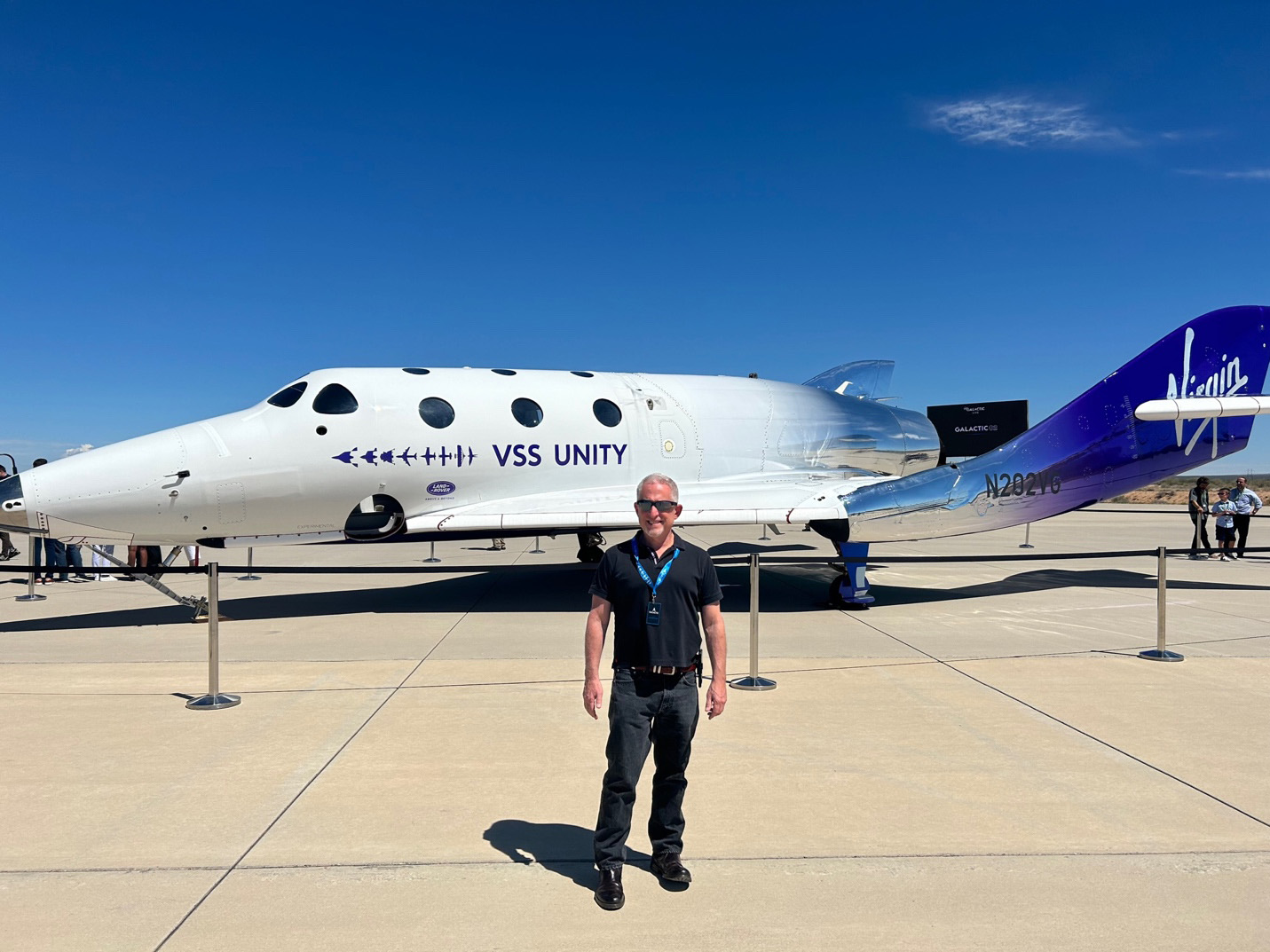
Suborbital astronomy
Astronomy, solar physics, planetary science, and many other research fields have used automated suborbital vehicles called sounding rockets since the late 1940s. But until the birth of commercial reusable rockets like those that Virgin Galactic and Blue Origin have pioneered, humans did not fly on suborbital research missions.
Of course, NASA’s early Mercury astronauts and pilots of the experimental X-15 spaceplane did reach suborbital space, but they did not conduct significant scientific research on those brief flights. Instead, the science was largely left to sounding rockets.

Such rockets have now conducted hundreds of brief flights to space over the past 70 years to perform an array of experiments: testing sensors before they flew orbitally, sampling the upper atmosphere, studying the solar system and the universe, and conducting microgravity and space biology experiments. Moreover, sounding rockets became a valuable proving ground for scientists to learn as they led small space projects before attempting larger ones. But despite their immense contributions, sounding rockets are still expensive. And because they are uncrewed, they require automation, which itself can be expensive — and failure-prone.
The new, 21st-century crewed suborbital vehicles that Blue Origin and Virgin Galactic have built, however, are much less expensive to fly experiments on than sounding rockets. They also allow researchers to fly with and operate their experiments themselves. For the first time, space researchers can do what oceanographers, volcanologists, field geologists, and many other kinds of scientists have done all along — go into the field to collect their data. This game-changing aspect of commercial suborbital spacecraft wasn’t appreciated at first because the vehicles were originally built for space tourism. But beginning in the late 2000s, scientists like myself started to recognize the value of these new vehicles for conducting many of the same kinds of research that sounding rockets have done, but with significant cost savings and other advantages.
When I returned from serving as the head of NASA’s Science Mission Directorate to SwRI in 2009, I initiated an internally funded effort to put SwRI in the lead in exploiting commercial suborbital vehicles for research. As a part of that effort, we contracted for two flights on Virgin Galactic and began preparing experiments to fly on each of those missions. We also initiated a training program to prepare myself and two other SwRI scientists, Dan Durda and Cathy Olkin, to fly aboard these vehicles as payload specialists. The initial training consisted of flights on zero-gravity aircraft, high-g centrifuges, and high-g flights aboard F-104 fighter jets.
Mission approval
In the spring of 2020, NASA released its first-ever call for proposals for researchers to fly in space with their payloads aboard commercial suborbital vehicles. To qualify for selection, NASA insisted that proposals must justify the need for the researcher to fly with the experiment. Our proposal did that by showing that a researcher flying to space could get the same amount of data as three sounding rockets — and for less money. In the fall of 2020, NASA selected our proposal.
Once our proposal had won, we knew there would be a high expectation of “getting the goods” (i.e., achieving success). So, we decided to use a SwRI-funded Virgin Galactic flight specifically to familiarize me with spaceflight and to mitigate some of the obstacles to success that could have appeared on the NASA flight, had it been my rookie mission.
As we analyzed those obstacles, we identified nine specific objectives for Flight 1, which we called our “training and risk reduction flight.” We classified six as “minimum success criteria” for Flight 1, including learning to move around the cabin in zero gravity using only one hand while carrying a mock-up of the astronomical imager in the other hand. Two more objectives were classified as “full mission success criteria” for Flight 1, including having personal time to look out the windows to eliminate — or at least reduce — the urge to do so during the higher-stakes NASA flight. The ninth objective — visually assessing the spaceship’s windows for exhaust films and scratch abrasions after the boosted ascent to space — was deemed a Flight 2 “get ahead” objective that would be nice to accomplish but not necessary for mission success.
My mission-specific training for the Galactic 5 flight began about 100 days before the launch. Since the late ’90s, I have flown research and training missions in high-performance aircraft like NASA F-18s, NASA WB-57s, and privately owned F-104s. I’ve also taken multiple high-g centrifuge courses, undergone altitude chamber training to simulate high-altitude conditions, and had dozens of microgravity flights in aircraft like NASA’s famous KC-135 “Vomit Comet.”
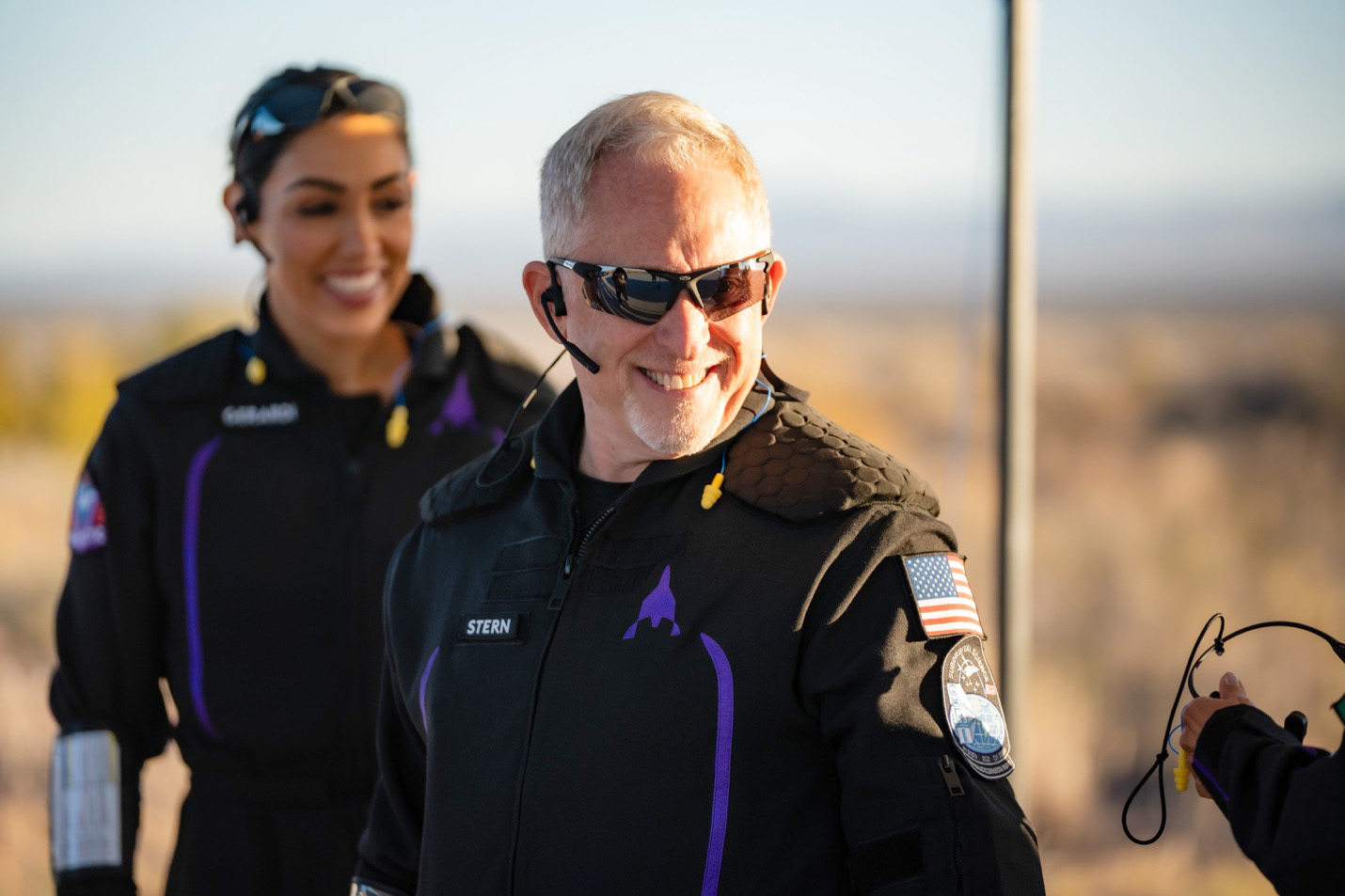
For the Galactic 5 mission, I took on an amped-up physical training routine with extra running and weightlifting. I also took a refresher centrifuge course at the National Aerospace Training and Research Center in Philadelphia. There, I underwent six simulated Virgin Galactic flight profiles in a single day, several at g-force levels 30 percent higher than actual flights. I also undertook daily practice runs of my flight activities checklist, which helped me refine the procedures and get the timing of each action down. This was critical because seven of my nine flight objectives had to be accomplished during the brief four-minute microgravity portion of the flight. All this training was capped off in the final run-up to launch by a comprehensive, four-day-long Virgin Galactic flight school at Spaceport America that included ingress and egress training, flight simulator runs, moment-by-moment flight simulations, safety drills, and an aerobatic aircraft g-force refresher flight. With my fellow Galactic 5 cabin crewmates Kellie and Ketty, I graduated from that course the day before our launch to space.
Suborbital flights on Virgin Galactic begin with a runway takeoff with the spaceship VSS Unity attached under the wings of its WhiteKnightTwo mothership, VMS Eve. This aircraft carries the spaceship to the stratosphere at an altitude near 50,000 feet (15,200 meters).
After the spaceship passes its in-flight checks, the countdown to separation begins. At T-minus 0, the pilot releases the latches between the two ships, and the spaceship free-falls for about two seconds before its engine ignites. Ignition results in about 2 gs of acceleration initially, but very quickly ramps up to nearly 5 gs.
Once the spaceship goes supersonic a few seconds into its flight, its commander pulls back the control stick to pitch the vehicle from horizontal to vertical for its ascent to space. The powered boost phase then continues for about a minute, burning out at a speed over Mach 3, and with enough energy to ascend to just above 50 miles (80 kilometers) in altitude. When the engine cuts off, the spaceship becomes weightless for its coast to apogee (the point of highest altitude), and then back down until atmospheric drag forces begin to decelerate the vehicle. The entire weightless portion of the mission lasts just four minutes.
The reentry that follows is another 5-g ride, this time decelerating. To stabilize the craft’s attitude during reentry, its twin tail booms tilt upward, increasing drag and acting like a shuttlecock. Once the speed from reentry is bled off, the booms lower, at which point the spaceship becomes a space-shuttle-like glider heading to a landing on the same runway it was carried aloft from just an hour earlier.
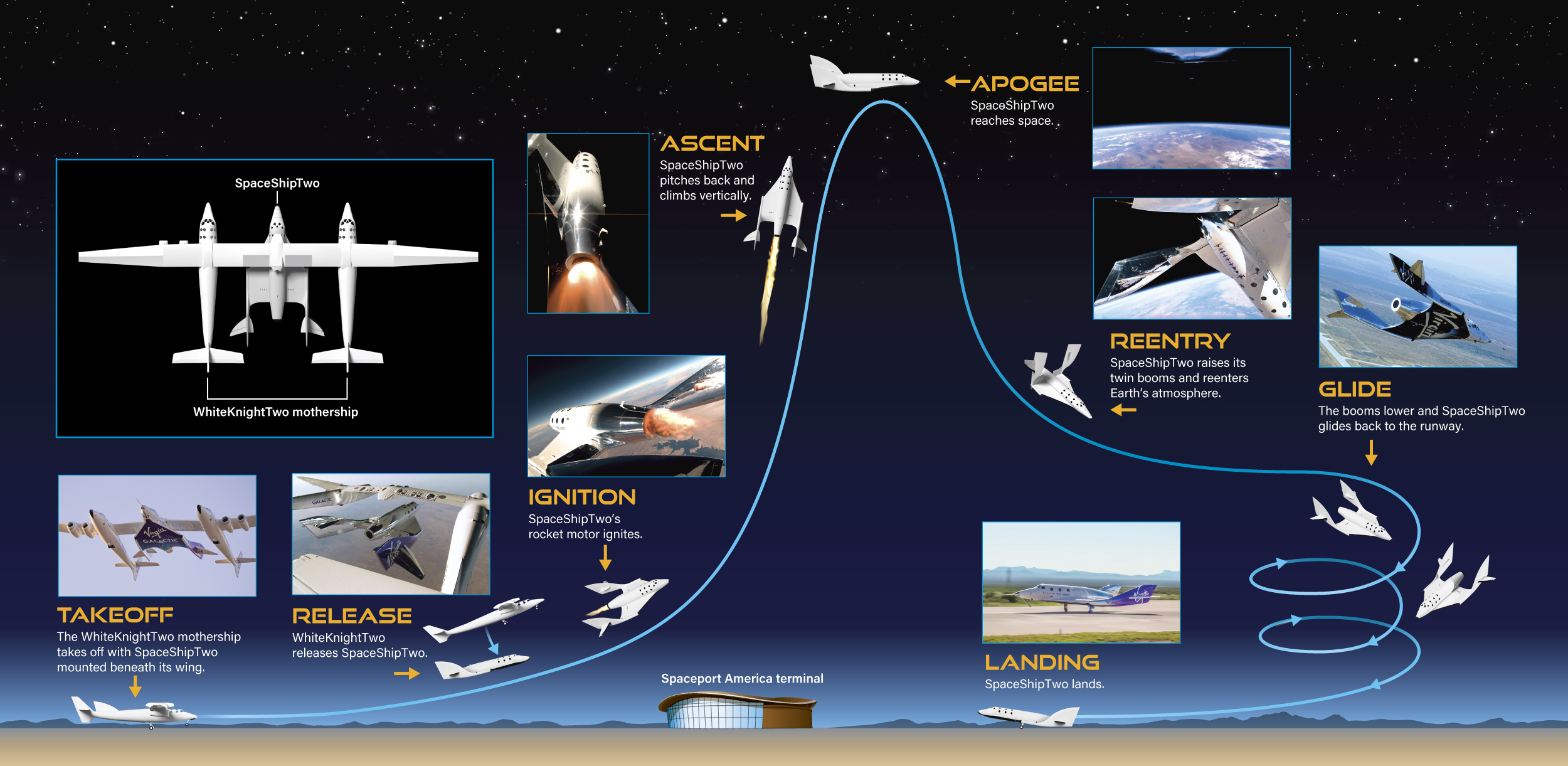
Go for launch
Our launch occurred shortly after sunrise on Nov. 2, 2023. Preflight activities began around 2:30 a.m. I awoke, did a final pre-mission timeline and checklist review, and took a transport vehicle out to the launch site at Spaceport America, in southern New Mexico. After a light breakfast there, we suited up, underwent preflight medical checks and received weather briefings, put on our survival gear and parachutes (in case of an off-field landing), and then boarded the spaceship VSS Unity. After the pilots of both the mothership and spaceship successfully completed preflight checks, we rolled down the runway and ascended uneventfully to the stratosphere, where another series of checkouts began.
All of those checkouts also went well and we were given a “go” for spaceship launch. The Eve crew conducted a countdown and then called, “Release, release, release.” With a loud thud, the big, heavy latches holding Unity to its mothership released, and we were momentarily weightless as the spaceship dropped. I counted “one-one thousand, two-one thousand” before the thrilling powered-ascent rocket ride kicked in, taking us supersonic in just seconds, after which Unity pitched back to vertical flight and rocketed to Mach 3. Sixty seconds later, the engine cut off at an altitude near 200,000 feet (61,000 m). At engine cutoff we were weightless, this time for four minutes on a suborbital parabola carrying us up to 55 miles (86 km) in altitude and back.
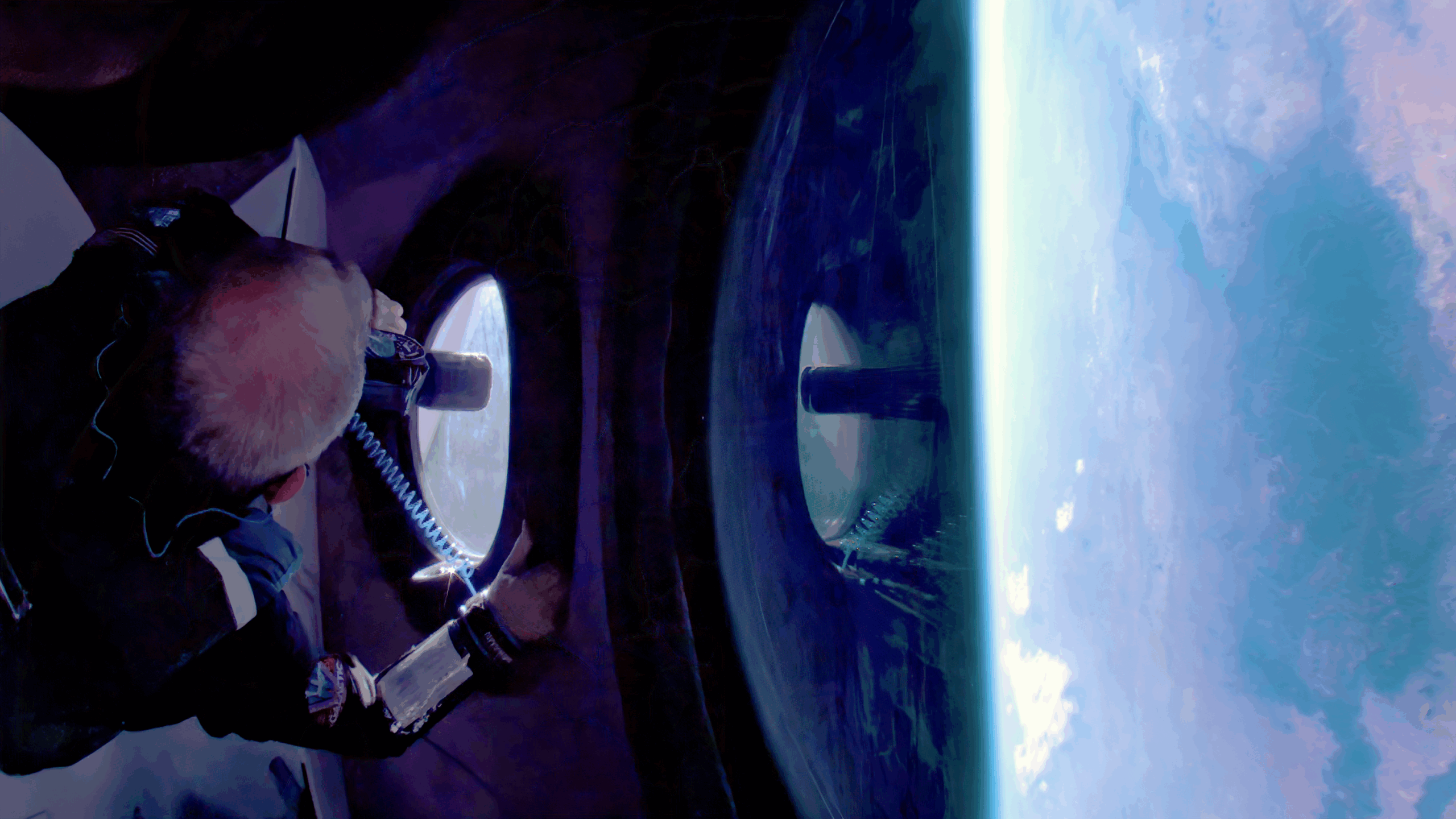

As I mentioned above, the primary objectives for me to accomplish on the flight were to practice moving about the cabin in weightlessness with one hand while holding an astronomical camera in the other, and to gather data on the feasibility of the activity timeline planned for Flight 2. I also (through a pair of biomedical harnesses that I wore) recorded physiological data on my blood pressure and respiration rate from launch to landing, particularly as I carried out activities during the in-space portion of the flight. And I was indeed able to get a little time enjoying the view as well as do a little PR, shooting a TV recording for SwRI.
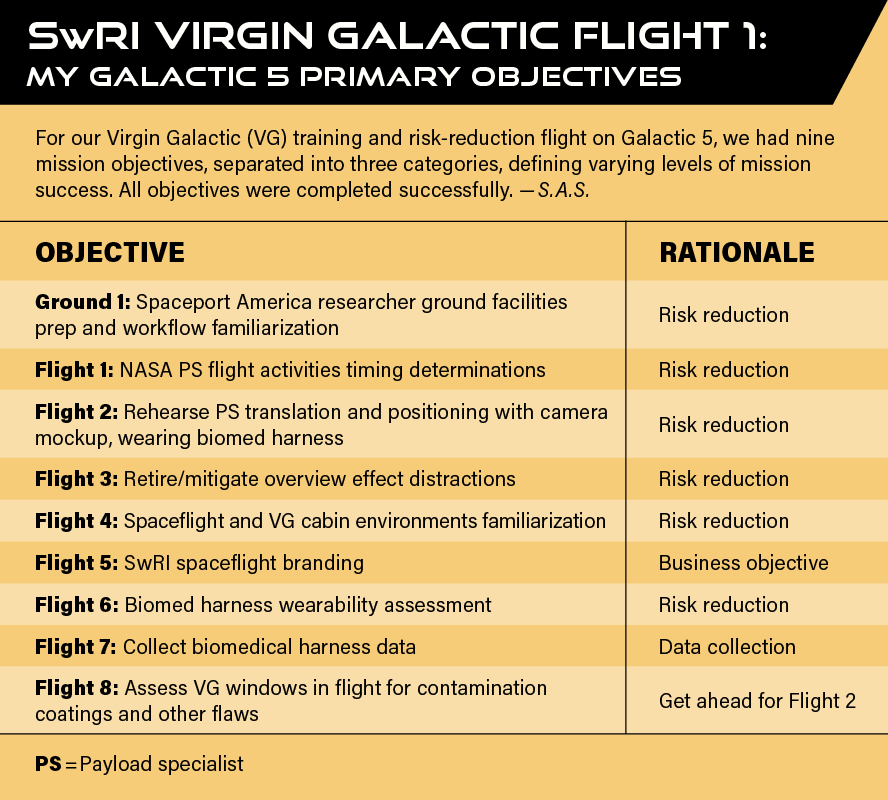
All of these objectives, as well as four others, were successfully accomplished — and with about 20 seconds to spare.
As a debriefing tool, I wore a lightweight communications headset that recorded everything I said from suiting up on the ground until after landing. I frequently spoke into that headset to record the flight’s events, lessons learned, and impressions in real time. In the days after the flight, my Flight 2 backup, Dan Durda, and I wrote a long list of almost 50 lessons learned from the mission to aid in preparation for the next flight and to provide feedback to Virgin Galactic to improve future research flights. There isn’t room here to reproduce that full list, but I can tell you a few of the most surprising things I experienced.
First, the sound of the cabin in space was very, very quiet, except for occasional loud firings of the attitude control jets. They sounded like someone was sharply banging on a kettle on the spaceship’s hull in staccato fashion.
Second, each time the vehicle pivoted in space — that is, changed its attitude — it took some conscious effort on my part to remain positioned, and when it turned while I was free-floating and transiting between different window work stations, the place I was headed to would pivot around me, sometimes by several feet as I was en route. Each time this occurred I had to compensate by making a second movement to get to the intended location.
Third, I found the sight of our planet mesmerizing and truly vast, with whole portions of North America visible out the windows in a single glance. The rising Moon over the horizon was another amazing sight to see. It’s also worth noting that the g forces during ascent and entry were easy to undergo, as was maneuvering in zero gravity — both likely due to my training experiences.
The future of space research
It’s now been around two years since my rookie spaceflight, and Virgin Galactic is preparing a new class of spacecraft, called Delta, on which I will fly for the NASA astronomical research mission. The flight is notionally set for the fall of 2026, but could be later, depending on Delta’s progress in construction and test flights. Our astronomical camera is ready to go, and so is the biomed harness I will wear to produce more physiological data on the second suborbital flight. I’m really excited to fly a second time, and can envision a point not too far off where numerous researchers are flying to space — some frequently — to get their data.
It’s been an honor and a privilege to be part of opening this new way of doing space research. Someday though, when prices drop enough, I’d love to fly just as a tourist, with the luxury of a lot more time to see the magnificent Earth from space. And I hope you’ll get to do that, too!

